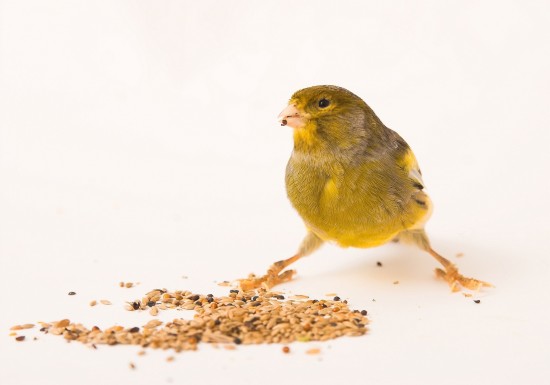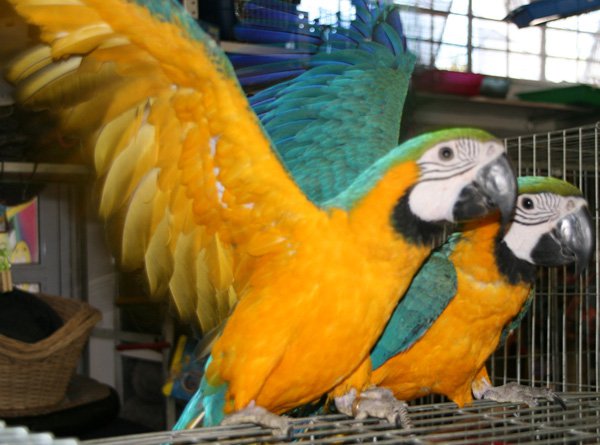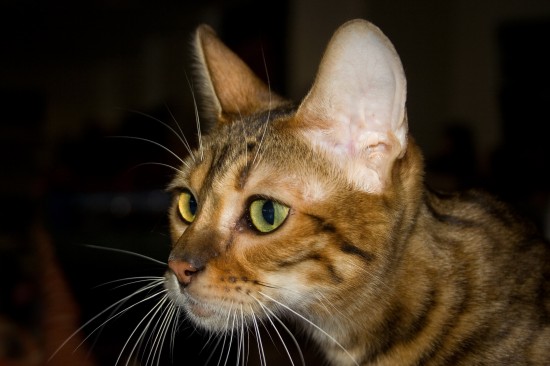

Regardless of what type of bird you keep, be it large or small, they will eat seeds but when it comes to knowing which seed to feed them, it can be baffling. With the names and colours and various mixes available, if you want to be health conscious for your bird, it can be tricky to understanding what seed is what. So here is a guide to some of the basics to help you get started.
Blue Maw is a type of poppy seed, a tiny bluish back seed that is a superb conditioning seed to be fed periodically. It is often mixed into egg food as can get lost due to its small size and is fed to insectivorous birds as well as seed eaters.
Despite its name, canary seed isn’t just for canaries. It is a slender, thin seed but it a good every day food for birds from budgies to canaries, foreign finches, parakeets up to cockatiels and fancy doves and pigeons.
Cracked corn is a popular feed for birds that eat on the ground such as quail and grackles as well as garden birds such as starlings. It is good to provide both oil and starch and is generally inexpensive. It is often used to fill in with seed that is more expensive with the coarse ground version being the most popular. Finely ground corn can be mixed with other seed or with egg food if required.
Hemp is a great treat seed to be fed occasionally but not something you want to give your birds too often. This is because it is rich in oil with over 40% of the seed made up from it and being high in protein. It can be fed alone or with egg food and gives around 560 calories per 100 grams.
Millet is a grass seed that is hugely popular with small birds such as finches and sparrows and comes in a range of colours and varieties. It is high in starch and a good food for birds as well as being able to be grown at home. Common types available include red, white, yellow, Japanese and Pancium millet.
If your birds are anything like mine, they will go crazy for millet spray. It is also brilliant when baby birds first come out of the nest, as it is relatively soft and easy for them to peck and learn to feed themselves. Some breeders do gently spray the seeds to make them even softer. The sprays are also enjoyed by larger birds such as budgies and parakeets, even parrots.
Niger seed, sometimes called nyger, is a small black seed that is very rich in oil and will be eaten by nearly all small birds, including quail, who will collect it from the ground. It is more expensive than some other seeds but there is less waste and special seed dispensers can be bought to further reduce any spillage.
Perilla is another conditioning seed that is particularly recommended for British finches such as Greenfinch and Goldfinch. It is also enjoyed by parakeets and budgies.
Safflower is the seed of an annual plant that is often enjoyed by larger finches and other medium sized birds as well as doves and cardinals. It isn’t always included in commercial seed mixtures but can be bought separately at good pet wholesalers and added to mixtures as a supplement.
Sunflower hearts or hulled sunflower seeds are very popular with many types of songbird and have the added advantage of not leaving mess in the food bowl. They are more expensive than the normal sunflower seeds but may end up being more economical as the wasted shell has been removed. They are a good source of calories for birds and are rich in oil. They will also not sprout if they fall to the ground. Birds such as finches, sparrows, cardinals, and other songbirds will eat them.
Teasel is a weed seed that is very popular particularly with Goldfinches but will also be enjoyed by other small birds. It can even be grown in the garden from seeds that are easily available and the birds will also enjoy eating from the plant.
As well as these seeds, there are also a variety of other seeds that may be featured in commercial seed mixtures for parrots. These include buckwheat, wheat, oats, paddy rice, pumpkin seeds and red and white dari. However, for a balanced diet for a parrot they will also include nuts and other items such as peanuts, almonds, hazels, barley, raisins, carrot, peppers and maize.
There are also special mixtures available for specific types of birds. One such mixture for African Greys include sunflower, buckwheat, safflower, wheat, paddy rice, dari, pats, hemp, maize and pumpkin seeds along with extras such as mung beans, cedar nuts, paprika and banana chips. This is formulated to give a balanced diet and also to help combat waste and mess for a type of bird that can be a fussy eater.
Also available are dietary requirements for those that eat more than seeds, fruits and nuts. Nectar is one that is necessary for a range of different birds such as lorys and lorikeets as well as sugar cane and palm nuts for other with special dietary needs.
 Choosing The Perfect Canine Friend – Pedigree Or Mixed Breed ?
Choosing The Perf
Choosing The Perfect Canine Friend – Pedigree Or Mixed Breed ?
Choosing The Perf
 Benefits Of Retractable Dog Leash with Flashlight
Benefits Of Retractable Dog Leash with Flashlight
Benefits Of Retractable Dog Leash with Flashlight
Benefits Of Retractable Dog Leash with Flashlight
 Get Medical Treatment for Pets by Vets at Animal Hospital in Coquitlam
Get Medical Treatment for Pets by Vets at Animal Hospital
Get Medical Treatment for Pets by Vets at Animal Hospital in Coquitlam
Get Medical Treatment for Pets by Vets at Animal Hospital
 Utilizing a Greenhouse as an Animal Sanctuary
Utilizing a Greenhouse as an Animal Sanctuary
Utilizing a Greenhouse as an Animal Sanctuary
Utilizing a Greenhouse as an Animal Sanctuary
 More Information On The Unusual Toyger Cat Breed
More Information
More Information On The Unusual Toyger Cat Breed
More Information
Copyright © 2005-2016 Pet Information All Rights Reserved
Contact us: www162date@outlook.com